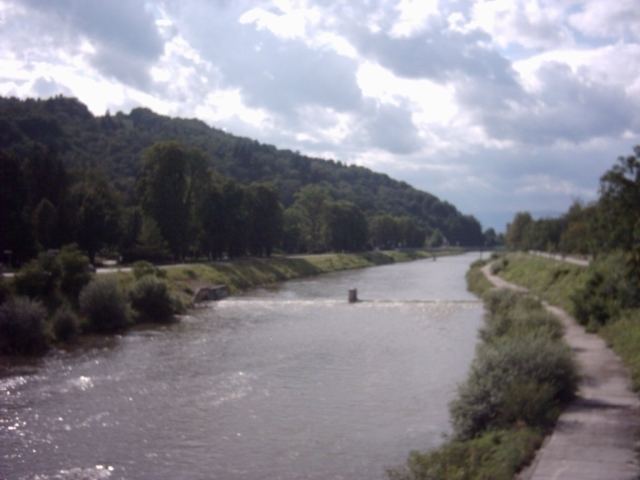Length 102 km | Basin size 1,848 m (65,300 cu ft) Source elevation 1,310 m | |
 | ||
Main source Rinka Falls1,310 m (4,300 ft) | ||
Fliegenfischen in slowenien savinja september 2015
The Savinja ([saˈʋiːnja]) is a river in northeast Slovenia which flows mostly in the Upper and Lower Savinja Valley (Slovene: Zgornja in Spodnja Savinjska dolina) and through the cities of Celje and Laško. The Savinja is the main river of the Savinja Alps (Sln. Savinjske Alpe). It flows into Sava River at the town of Zidani Most. It has often flooded, such as in the 1960s, 1990, and 1995. The Savinja has a length of 102 kilometres (63 mi).
Contents
- Fliegenfischen in slowenien savinja september 2015
- Map of Savinja Slovenia
- Savinja flyfishing
- TributariesEdit
- Water qualityEdit
- Hydronym and etymologyEdit
- Life along the riverEdit
- References
Map of Savinja, Slovenia
Savinja flyfishing
TributariesEdit
The main tributaries of the Savinja are the Jušef and the Klobaša at Solčava, the Lučnica at Luče, the Ljubnica at Ljubno, the Dreta at Nazarje, the Paka at Šmartno ob Paki, and the Ložnica and Voglajna with the Hudinja at Celje.
Water qualityEdit
The quality of water is first-class to Radmirje, then it falls to second class and after to third.
Hydronym and etymologyEdit
The name Savinja (attested in written sources in 980 as Sovuina) is derived from *Savьn′a, in turn derived from the hydronym Sava, of which it is a tributary. The German name Sann was attested later. In the local dialect, the river is known as Sáu̯ńe. The form *Savьn′a should have yielded Savnja as the current Slovene name, but it was reshaped on the model of Hudinja. The name is believed to ultimately not be of Slavic origin, but of older pre-Slavic origin.
The German name Sann was also used in some older English sources; for example, in the ninth edition of Encyclopædia Britannica from 1911.
Some other names for the river include:
The Roman goddess Adsaluta, whose altars were found in the area of the settlement of Sava, was long identified with the Savinja. Modern scholars have rejected the connection.
Life along the riverEdit
Raftsmen from Ljubno traveled along the river until the 1950s. In their memory, a bronze sculpture of a raftsman (Splavar), created in 1961 by Boris Kalin, stands on the river's left bank in Celje.
